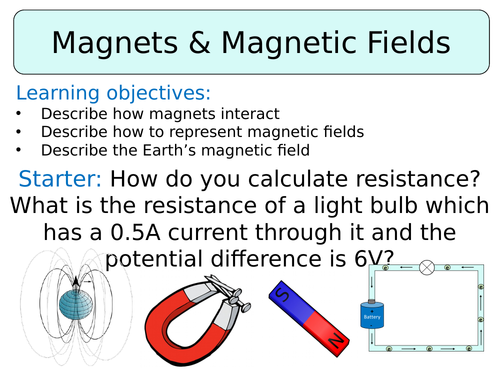
This lesson is designed for the KS3 Year 8 Science course, specifically the P2 1.1 unit on ‘Electricity & Magnetism’.
The lesson begins with a question for pupils to ‘Think > Pair > Share’ their ideas about what they already know about magnets. This can be discussed in a group, before feeding back to the classroom. Students will now complete a practical investigation: testing magnetic materials, in groups they will be given a selection of materials and a bar magnet, they will need to determine which materials are magnetic. Once complete, students can check their work against the answers provided.
Next, students will investigate what happens when the poles of two bar magnets are brought together. Students will be given a set of combinations to try: N + N, S + N, S + S - attract or repel? Their results can be recorded in a table in their books and then be assessed using the mark scheme once complete.
The next part of the lesson focuses on magnetic fields; firstly, students are shown the magnetic field of a bar magnet. They will have a go at drawing their own - they will have a worksheet, on it is lots of of circles surrounding a bar magnet, on each of the circles they will place a compass and then draw the direction the arrow is facing. Once complete, students should link up the arrows to show the direction of the magnetic field, they can stick this worksheet into their books.
The last part of the lesson focuses on the magnetic field surrounding Earth, students are shown diagrams to demonstrate this idea and then will assess their knowledge of the subject by getting students to complete a fill-in-the-blanks task. This task can be self-assessed using the mark scheme provided in the PowerPoint presentation.
The plenary task requires students to summarise what they have learned this lesson in three sentences.
All resources are included at the end of the presentation, thanks for looking, if you have any questions please let me know in the comments section and any feedback would be appreciated :)
Get this resource as part of a bundle and save up to 43%
A bundle is a package of resources grouped together to teach a particular topic, or a series of lessons, in one place.
Something went wrong, please try again later.
Looks great! Good pictures, diagrams, good exercise. Really useful.
Report this resourceto let us know if it violates our terms and conditions.
Our customer service team will review your report and will be in touch.
